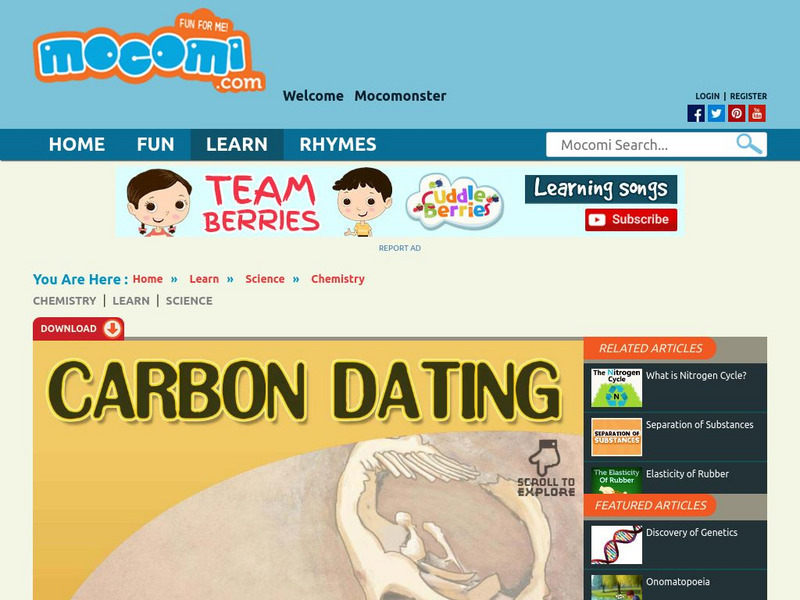Khan Academy
Khan Academy: Mcat: Physical Processes: Atomic Nucleus: Decay Graphs and Half Lives Article
Explains how scientists can tell when radiation has been leaked, how to read a decay graph, what we mean by a half-life, and what carbon dating is.
Mocomi & Anibrain Digital Technologies
Mocomi: Carbon Dating
How do we know how old a fossil is? We use carbon, as every living being has carbon. Carbon dating, also known as radiocarbon dating, is a method of estimating the age of carbon-bearing materials up to 60,000 years old. Scroll through to...
Other
Futurism: Does Life in 2018 Live Up to What We Predicted a Century Ago?
People in the early 20th century were hopeful about the future that innovation might bring. The technology that came out of World War I, and the growing potential brought by electricity (half of all U.S. homes had electric power by 1925)...
University of Hawai'i
Asteroid Heating: A Shocking View
This April 2004 article provides insight and one view into the world of asteroid heating, the age of meteorites and new theories in the changes in shocked and unshocked chondrites. Some great photomicrographs.
Missouri State University
Missouri State University: Lost World of Gilded Age Politics
This extensive look at politics between 1876 and 1896 describes how the Republican Party functioned during this time and how the excesses in politics resulted in reform and the next era in politics, the Progressive Era. A very...
Khan Academy
Khan Academy: Studies for the Battle of Cascina and the Creation of Adam
The Battle of Cascina was a famous fourteenth-century victory over Pisa. Michelangelo's Bathers depicted the Florentine army hurriedly preparing for battle after a dip in the river. Michelangelo's drawing caused a sensation because of...
How Stuff Works
How Stuff Works: How Evolution Works
Bacteria reproduce asexually. This means that, when a bacteria cell splits, both halves of the split are identical -- they contain exactly the same DNA. The offspring is a clone of the parent.
Other popular searches
- Radioactivity Half Life
- Half Life Problems
- Half Life Radiometric Dating
- Radioactive Half Life
- Half Life Calculations
- Nuclear Chemistry Half Life
- Half Life Problems
- Half Life of Isotopes
- Nuclear Half Life
- Modeling Half Life
- Calculating Half Life
- Radioactive Half Life






